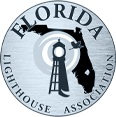Florida hasn’t had or created a new county in almost 100 years, but during the Florida territorial time and early years of statehood, it seemed like it was quite the thing to do. Contemporary thinking says it is a very serious matter and you just can’t go around, willy-nilly, and dub or redub something like a county’s name. Think of all the cost and bother to replace all that letterhead and redo all those MapQuest programs, change signs on courthouses, honorary sheriff badges, chamber of commerce buildings, rename roads and streets and “Welcome to INSERT NEW COUNTY NAME SIGNS).” However, in Old Florida it wasn’t so tough.
Territorial Governor Andrew Jackson, later President Jackson, yes, the same wild-haired dead president on the Twenty Dollar bill, but probably more famous to kids from the fifties for the lyrics in Johnny Horton’s song “The Battle of New Orleans,” received authority to take complete possession of all of Florida when ceded by Spain in 1821. Jackson divided the whole territory into two “counties,” right along the Suwannee River. All the West formed Escambia County and the East was named St. Johns, largely consistent with the previously existing British colonies of West and East Florida.
As it turns out, Florida had established several smaller counties that were later given new names, either because the old one proved unappealing, or the citizens found something they liked better. The best example of the “unappealing” appellation has got to be Mosquito County, the historic name of an early county that once comprised most of the eastern part of Florida. Mosquito was about 200 miles long by 60 miles wide, and was by far, the largest county in the new territory. At the time of its creation in 1824, it included all of what is now Volusia (now where did that name come from?), Brevard, Indian River, St. Lucie, Martin, Seminole, Osceola, Orange, Lake, Polk and Palm Beach counties! So, not surprising, the whole of central Florida was known as “Los Musquitos” from the 1500’s until 1844.
Excerpt from H.S. Tanner’s 1833 map of Florida, with Mosquito County shaded in pink along Florida’s east coast. Curtesy of Florida Memory Project.
The Spanish dubbed one of the regions watercourses Barra de Mosquitos in the 17th century, referring to the mass of insects they encountered with some ferocious regularity in the area’s marshlands. Then the territorial legislature chose to name the county after that waterway. Then it gets worse: Mosquito Bar (inlet), and on and on. Ouch.
Excerpt of a 1644 map drawn by Willem Janszoon Blaeu, with particular focus on the named waterways along Florida’s Atlantic coast. Barra de Mosquitos is indicated with a red arrow. Curtesy of Florida Memory Project.
After Florida became a territory of the United States in 1821, the earlier plantations revitalized, commerce increased, and shortly after, the need for a lighthouse at the inlet was recognized. In ten years, a Mosquito County census listed 15 heads of households, and a total of 733 persons, mostly slaves. In January of 1835, the county seat was moved to New Smyrna. Indeed, 1835 was a particularly inauspicious year. The ill-fated 1835 Mosquito Inlet Lighthouse was constructed during the winter of 1834 and finished in the early spring of 1835 by the Treasury Department. It was constructed on the South side of the inlet.
1835 Tower at Mosquito Inlet, artist’s conception.
Whoa? The Department of the Treasury built and maintained the nation’s lighthouses? Actually, that’s true. A significant amount of money went to the US Treasury from fees paid to ports and harbors from ships, domestic and foreign. With a series of turbulent storms and an attack by a band of Seminoles, the lighthouse, never lit, literally fell into the water in March of 1836. The Second Seminole War, begun a few months earlier, largely depopulated Mosquito County of white settlers. By 1838 as the war raged on, there was almost no official recordings of any activity, and later the St. John’s County Clerk was designated to keep Mosquito’s records, since there were no Mosquito recordkeepers in residence. In 1840, the census listed no white inhabitants other than soldiers based at Fort Pierce and New Smyrna forts.
Map showing Leah Read County, 1839
In the same year, some 78 citizens of Mosquito petitioned the legislature to change the name of Mosquito County to something more attractive. Saying the name was “unpleasant to most citizens,” they asked the name be changed to Harrison County, after President William Henry Harrison who had died after 31 days in office. During that short time in office, Harrison had appointed the popular Richard Call to another term as Florida territorial governor. That appointment, one of few Harrison had time to make, had won the hearts of many Mosquito citizens.
Petition signed by 73 citizens of Mosquito County, asking for the county to be renamed Harrison, and for the boundaries to be redefined (1844). Box 4, Folder 3, Records of the Territorial Legislative Council (Series S 877), State Archives of Florida.
Finally, in 1844, the huge area then called Mosquito County was separated in two. The southern half was named St. Lucia County, and the northern half renamed Orange. Eleven years later, St. Lucia County was renamed Brevard County.
Tanner’s 1849 map of Florida. Orange County (formerly Mosquito county) is shown in green.
Courtesy of Florida Memory Project.
Fast forward to the Florida land boom in the 1920’s, and the legislature finally reacts to the next to last area to bear Mosquito in its name, the Mosquito Inlet. In 1926, the area name is changed to honor the contributions of accidental discoverer, Juan Ponce De Leon, as is its lighthouse in 1927, as the Mosquito Inlet Lighthouse becomes the Ponce Inlet Lighthouse. Only the Mosquito Lagoon still carries in that title the name, Mosquito, as it connects the north end of the lagoon and the south end of the Halifax River to the Atlantic Ocean.
So, where does Volusia come in? Volusia County was named after its largest community on the west side of the county, Volusia, when the Florida Legislature created it by carving it from part of Orange County in late winter of 1854.
The whole area, west and east, area was long inhabited by the indigenous Timucua peoples. They were decimated by disease because of contact with settlers from Europe. During British Florida, a relatively large plantation, called New Smyrna, with about 1400 Menorcan, Greek and Italians settler-farmers, under the sponsorship of a Scottish physician Andrew Turnbull, was formed in an area around the inlet to raise indigo as their cash crop. Ill-conceived and lacking leadership, the colony failed, but many colonists walked the 70 miles to seek protection from the British governor of St. Augustine and eventually integrated into that city’s population.
Finally, let’s talk about Volusia. I have researched five origins of the name Volusia:
The name “Volusia” came from a word meaning “Land of the Euchee.” The Euchee Indians migrated into the area after the Timucuca declined. They were also called the “Uchees.”
Volusia was named after a British settler Voluz, who owned a plantation on the St. John’s River in the 1700’s.
The name came from a French or Belgian owner of a trading post whose last name, Veluche, was anglicized to Volusia.
Volusia, the town, was named after Jere Volusia.
The settlement was named by the Spanish after the Roman lawgiver Lucius Volusius Maecainus who wrote 25 law books and tutored Marcus Aurelius.
Whatever, it’s home.
To learn more about this fascinating subject, join us on March 7th at 11:00am at the Ponce Inlet Lighthouse as Lead Docent John Mann will engage guests with A County, an Inlet, and a Lighthouse Named Mosquito. This presentation is included with general admission to the Ponce Inlet Lighthouse and Museum. Advanced registration is encouraged.
For more information, please contact Programs Manager Zach Hopple at education@ponceinlet.org or at (386)861-1821 ext. 18.



